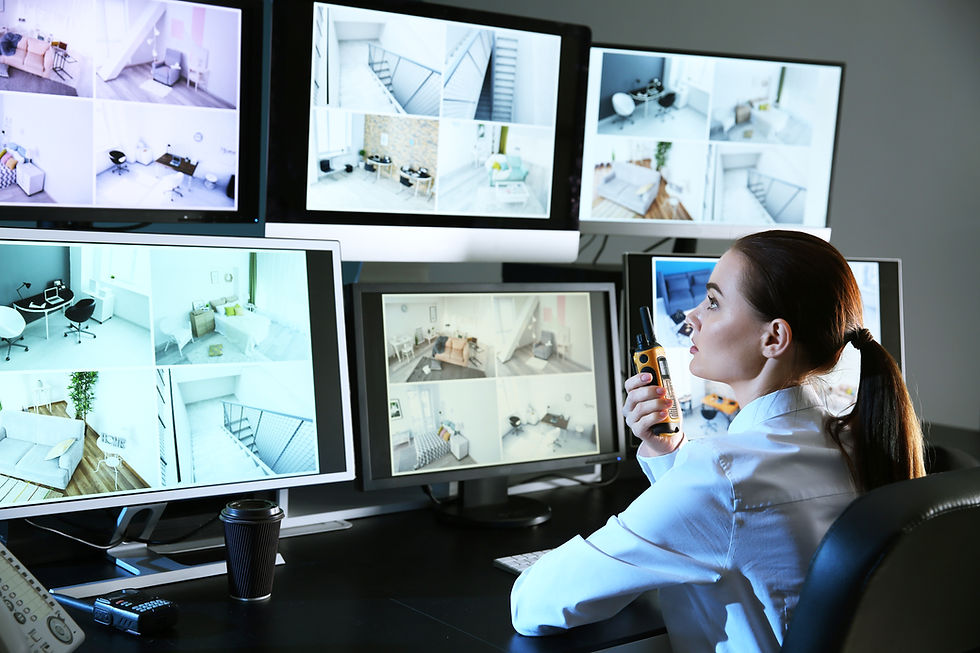What Will Smart Homes Look Like 10 Years From Now?
- Jonathan Madison
- Nov 20, 2020
- 3 min read
Updated: Apr 29
Imagine this: it’s 6 A.M., and your alarm goes off earlier than usual. It’s not a glitch—your smart alarm adjusted itself after checking your calendar and spotting an early meeting. Your shower starts warming to exactly 103°F, and your electric car is already charged by the solar panels or wind turbine on your roof. When you return home, there’s a package on the doorstep, delivered by drone. Inside is cold medicine, automatically ordered after health sensors detected early signs of illness.
This vision may sound futuristic, but it’s a glimpse of what experts believe smart homes could look like just a decade from now.

Moving Beyond Convenience to Total Integration
Today, smart homes often mean a few connected devices like smart bulbs or voice assistants. But in the next 10 years, the smart home is expected to evolve into a fully immersive experience, driven by:
Artificial Intelligence (AI) that learns and adapts to your habits.
Robotics that assist with everyday tasks like cooking or cleaning.
Advanced sensors that monitor health, safety, and environmental factors.
Data-driven automation that anticipates your needs before you act.
According to Berg Insight, 63 million U.S. homes were projected to be smart by 2022. As this number grows, homes will transition from manual control to full autonomy powered by the Internet of Things (IoT).
AI as the Brain of the Home
Artificial intelligence will be at the core of future smart homes. These systems will not just follow commands but learn behavior over time, providing truly personalized environments. For example:
Platforms like those from Crestron are developing systems that learn your preferences—music in the morning, lighting before bed—and automate these tasks seamlessly.
AI will coordinate across devices, acting as the "brain" that connects your home’s many functions.
This next step in automation is about proactive, intelligent systems that adjust themselves to your life.
The Rise of Smart Robots
Robots are already part of our homes in small ways, like robotic vacuums. In the next decade, their roles will expand significantly:
Ori Living and Ikea are creating robotic furniture that adapts to your needs—transforming a bed into a desk, for example.
Nvidia is working on a robotic arm that assists in the kitchen, slicing vegetables or cleaning up after dinner.
Design3 introduced CARL, a concept robot that patrols your home, detects intrusions or pollutants, and even watches your pets.
These robots will offer not only convenience but also safety, accessibility, and companionship.
Health Tech in the Home
Health monitoring will be a major driver of smart home technology. Embedded sensors and devices will track your well-being in subtle but powerful ways:
Refrigerators may suggest healthier choices if you reach for soda too often.
Medicine cabinets will check if prescriptions are taken on time.
Toilets and mirrors will scan bodily waste or skin conditions for early signs of illness.
Environmental sensors will detect water leaks, pests, or mold before they become costly issues.
These systems aim to catch problems early, improve daily wellness, and reduce medical or repair expenses.
The Price of Smart Living
Smart home technology comes at a cost. According to ABI Research, global consumer spending on IoT gear was expected to reach $123 billion by 2021, and that figure is likely to increase.
Market share projections by 2023 show:
Home monitoring and security: 22.6%
Smart speakers: 15.4%
Smart lighting: 11.8%
As devices become more user-friendly and beneficial, broader adoption is expected.
Privacy and Security Challenges
With growing smart capabilities come increased privacy and security risks. Every connected device is a potential entry point for hackers. Some concerns include:
Unauthorized access to security cameras or door locks.
Sensitive personal data being intercepted or misused.
Massive IoT-related cyberattacks, like the one in 2016 that disrupted large portions of the Internet using hijacked smart devices.
Daniel Cooley of Silicon Labs warns that a major breach could be a “mass-extinction event” for the industry.
Regulation on the Horizon
Governments are starting to take notice. A bill proposed by Senator Mark Warner aims to establish minimum security standards for smart devices used by federal agencies. Such regulations could eventually apply industry-wide.
Smart Homes Will Become the New Normal
Whether you plan for it or not, chances are your next home will be connected. Architect Michael Gardner notes that homes are now being designed with smart technology from the ground up, not just added on later.
Eventually, experts say, smart-home systems will be as essential and expected as plumbing or electricity. As Daniel Cooley puts it, “You’ll rely on it.”




Comments